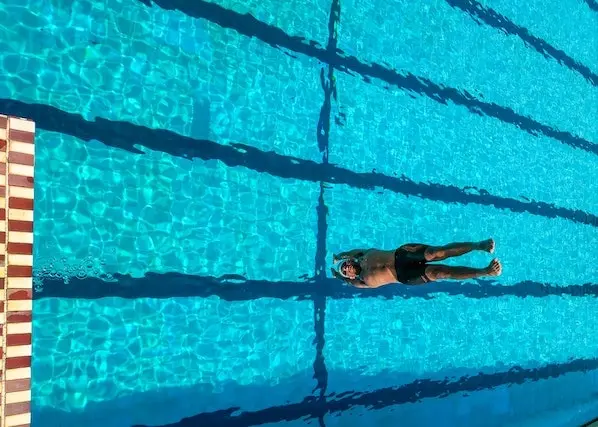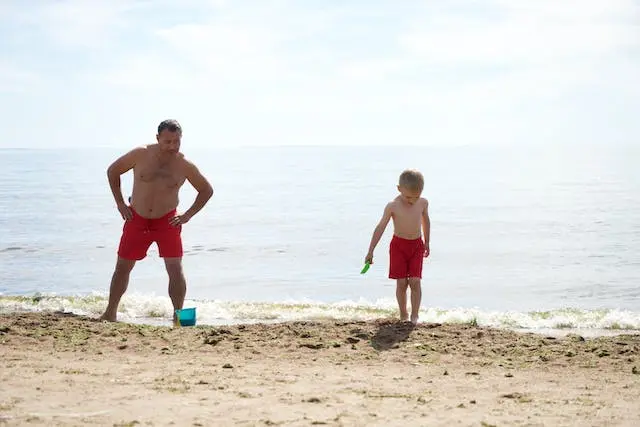10 Insights from Pediatricians: The Importance of Baby Swim Caps for Safe Water Play
Dive into the world of safe water play for your little one with expert advice from paediatricians. In this comprehensive guide, we’ll explore why paediatricians recommend the use of baby swim caps and how these simple accessories can contribute to a safer and more enjoyable aquatic experience for your baby. Let’s unlock the wisdom of pediatric experts to ensure your baby’s water adventures are filled with joy and safety.
Table of Contents
Why do paediatricians emphasize the use of swim caps for babies?
- Hair and Eye Protection: Pediatricians highlight that swim caps provide an additional layer of protection for a baby’s delicate hair and eyes during water play. Chlorine and other pool chemicals can be harsh, and a swim cap acts as a barrier, reducing the risk of irritation.
- Prevent Hair Tangles: Pediatric experts point out that baby swim caps prevent hair tangling, especially in longer hair. This not only makes post-swim grooming easier but also ensures a more comfortable experience for the baby.
- Eye Shield: Swim caps also act as a shield against water entering the baby’s eyes, reducing the chances of irritation or discomfort. Paediatricians stress the importance of keeping the eyes protected, especially during the early stages of water introduction.

At What Age Can Babies Start Using Swim Caps?
- Early Introduction: Pediatricians recommend introducing swim caps at an early age when babies begin water activities. As soon as your baby starts participating in water play, using a swim cap becomes a beneficial habit.
- Adaptation Period: It’s important to allow babies time to adapt to wearing a swim cap. Pediatric experts suggest starting with shorter durations and gradually increasing the time as the baby becomes more comfortable.
How do swim caps contribute to water safety for babies?
- Reduced Slipperiness: Pediatricians explain that wet baby hair can make holding onto a baby more challenging in the water. Swim caps help reduce slipperiness, providing a firmer grip for parents or caregivers during water play.
- Enhanced Visibility: Swim caps contribute to better visibility in the water. Pediatric experts stress that being able to see the baby’s face is crucial for supervision and ensuring a safe water environment.

Are all swim caps created equal?
- Material Matters: Pediatricians stress the importance of choosing a swim cap made from safe and durable materials. Caps made from latex or silicone are often recommended for their water-resistant properties and gentle touch on a baby’s sensitive skin.
- Proper Fit: Pediatric experts highlight the significance of a proper fit. A well-fitted swim cap ensures comfort for the baby and enhances its effectiveness in protecting pool water elements.
Can swim caps help prevent ear infections in babies?
- Ear Protection: Pediatricians affirm that well-designed swim caps can contribute to preventing water from entering the baby’s ears. By keeping ears dry, the risk of ear infections, a common concern for parents, is significantly reduced.
- Proper Cleaning: Pediatric experts advise on the importance of proper cleaning of swim caps after each use. Regular cleaning prevents the buildup of bacteria that could contribute to ear infections.
How Can Parents Choose the Right Swim Cap for Their Baby?

- Consider Material: Pediatricians suggest considering materials like silicone or latex for baby swim caps. These materials are gentle on the skin, provide effective water resistance, and are durable for repeated use.
- Adjustable Straps: Pediatric experts recommend choosing swim caps with adjustable straps. This feature ensures a snug yet comfortable fit, reducing the likelihood of the cap slipping off during water play
Can swim caps enhance the overall water experience for babies?
- Positive Association: Pediatricians highlight that introducing swim caps early creates a positive association with water activities. Babies are likely to feel more comfortable and secure in the water when wearing familiar accessories like a swim cap.
- Customization Options: Pediatric experts note that some swim caps come in playful designs and colours. Allowing your baby to choose or customize their swim cap can make the water experience more enjoyable and engaging
Are there any precautions parents should take when using swim caps for babies?

- Regular Checks: Pediatricians advise parents to regularly check the condition of the swim cap for any signs of wear or tear. If the cap shows signs of damage, it’s recommended to replace it promptly to maintain its effectiveness.
- Avoid Over-Tightening: Pediatric experts emphasize the importance of ensuring a snug but not overly tight fit. Overly tight swim caps can cause discomfort for the baby and may compromise their safety.
Can swim caps contribute to a healthier scalp for babies?
- Protection from Chlorine: Pediatricians explain that chlorine in pool water can strip natural oils from the scalp, leading to dryness. Swim caps act as a protective barrier, reducing the exposure of the baby’s scalp to chlorine and helping to maintain healthier skin.
- Easy Post-Swim Care: Pediatric experts highlight that using a swim cap makes post-swim hair and scalp care simpler. Parents can focus on gentle rinsing and moisturizing without extensive detangling.
How Can Parents Encourage Babies to Wear Swim Caps Without Discomfort?
- Gradual Introduction: Pediatricians recommend a gradual introduction to wearing swim caps. Start with short durations and gradually increase the time as the baby becomes accustomed.
- Positive Reinforcement: Pediatric experts suggest using positive reinforcement, such as praise or small rewards, to create a positive association with wearing the swim cap. Making it an enjoyable experience encourages cooperation.
Conclusion
Paediatricians advocate for the use of baby swim caps as an essential element in promoting safe and enjoyable water play for little ones. By following these expert insights, parents can make informed choices, ensuring that swim caps become not only a safety measure but also a source of comfort and joy in their baby’s aquatic adventures. Remember, a well-protected and happy baby makes for delightful and worry-free water play!

Are there specific guidelines for cleaning and maintaining baby swim caps recommended by paediatricians?
Paediatricians often recommend a simple yet effective cleaning routine for baby swim caps. After each use, rinse the swim cap with cool, clean water to remove any chlorine or pool chemicals. Avoid using harsh soaps or detergents that can damage the material. Pat the cap dry with a soft towel, and allow it to air-dry completely before storage. Pediatric experts stress the importance of regular checks for signs of wear or tear and suggest replacing the cap if any damage is detected.
What role do paediatricians believe swim caps play in promoting early water acclimatization for babies?
Paediatricians emphasize the positive impact of swim caps on a baby’s early water experiences. By providing a layer of protection against pool chemicals and reducing slipperiness, swim caps contribute to a more comfortable and enjoyable water environment. Pediatric experts believe that introducing swim caps early creates a positive association with water activities, making babies more receptive to water play. The familiarity and comfort provided by swim caps play a crucial role in fostering a positive attitude toward water exploration from an early age.




